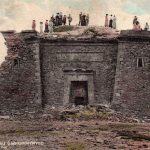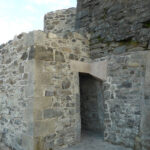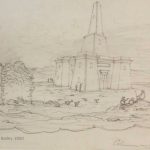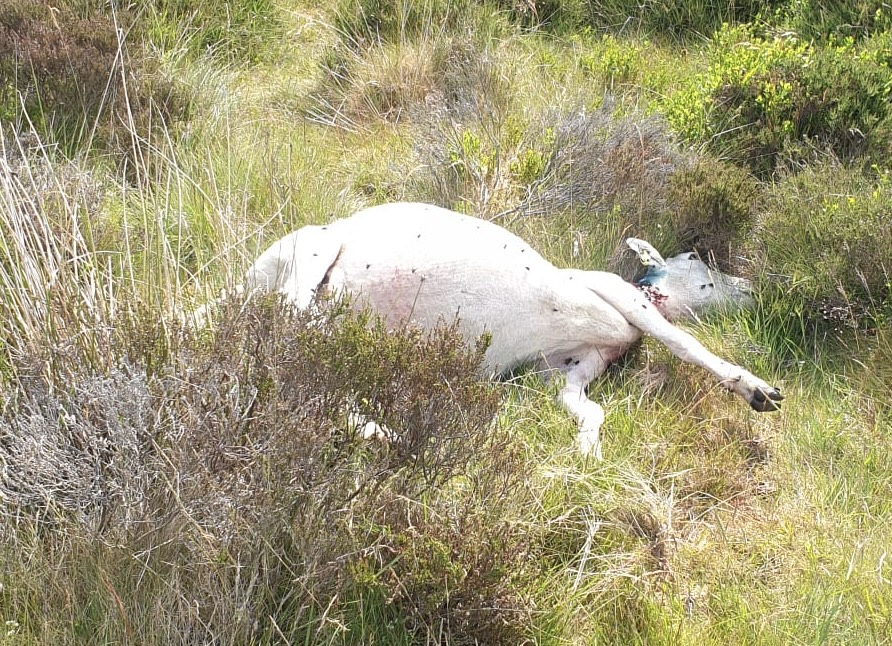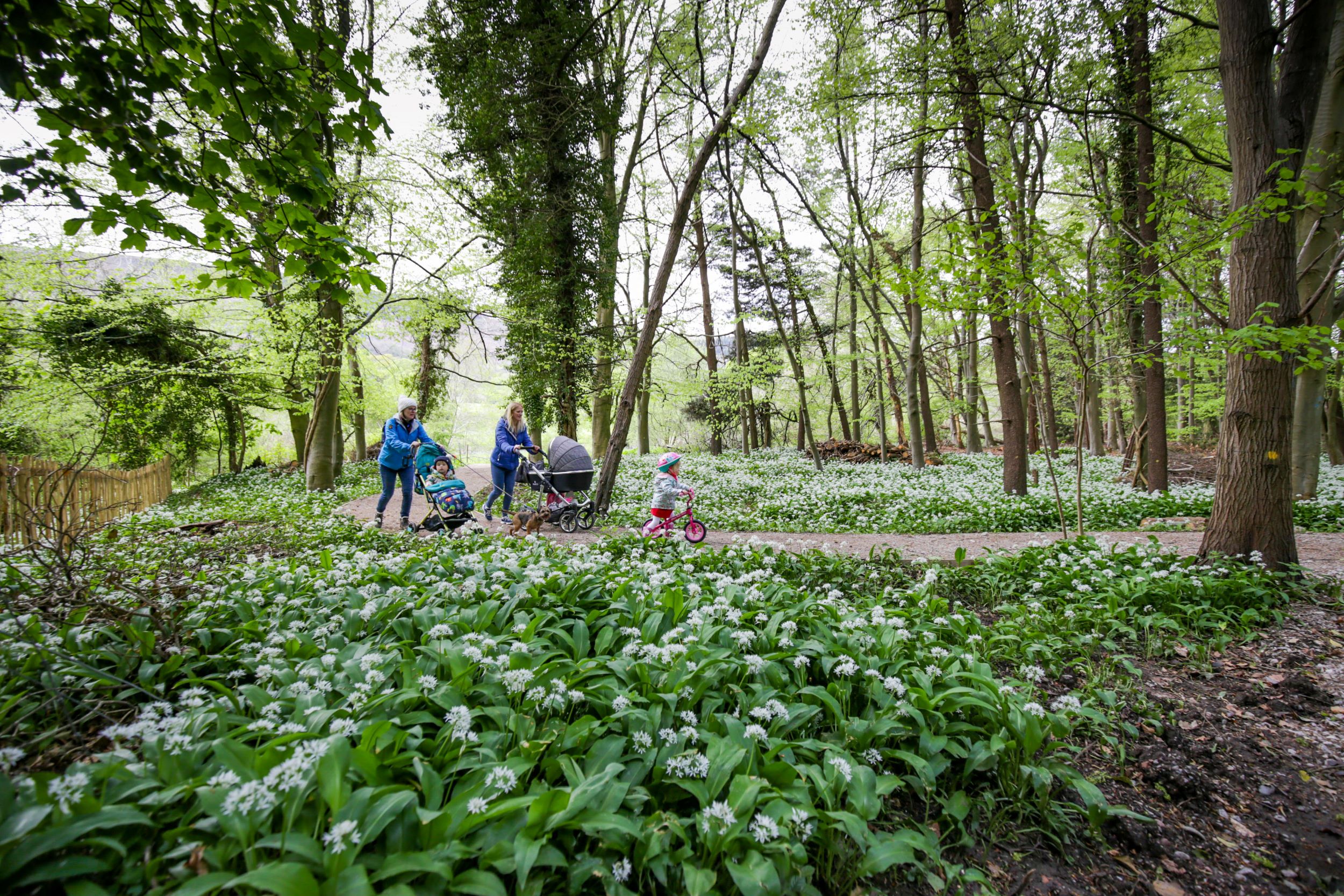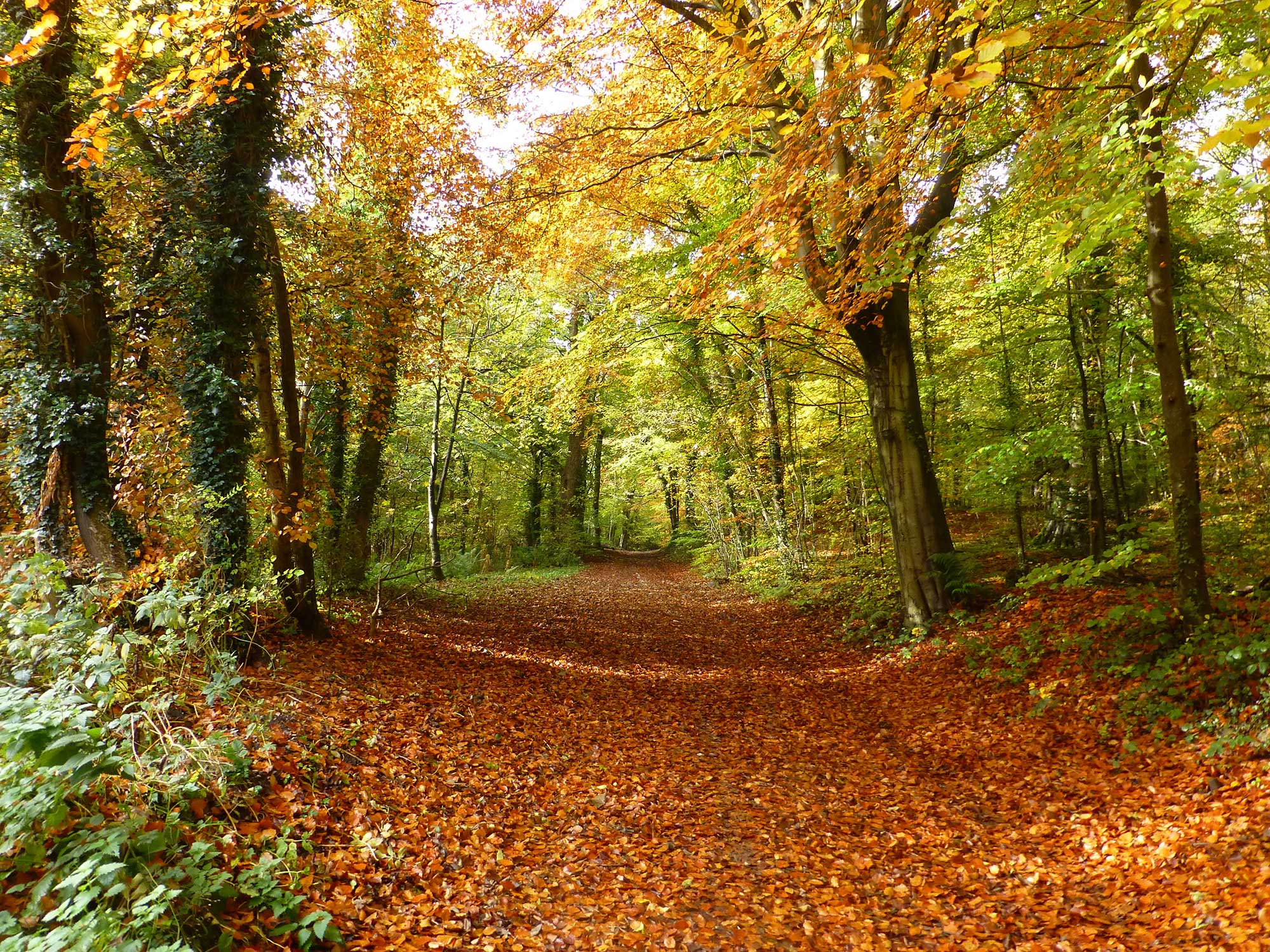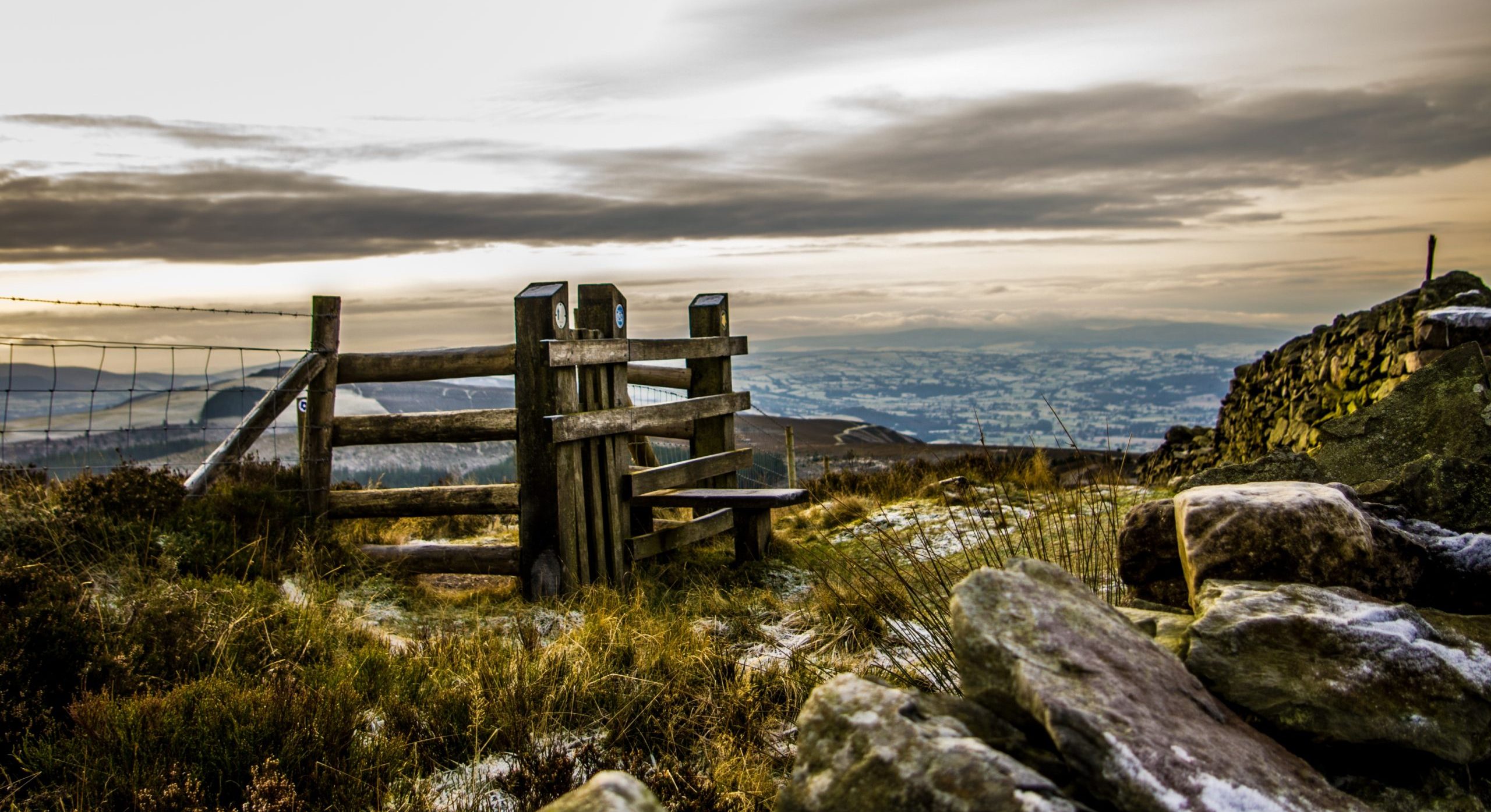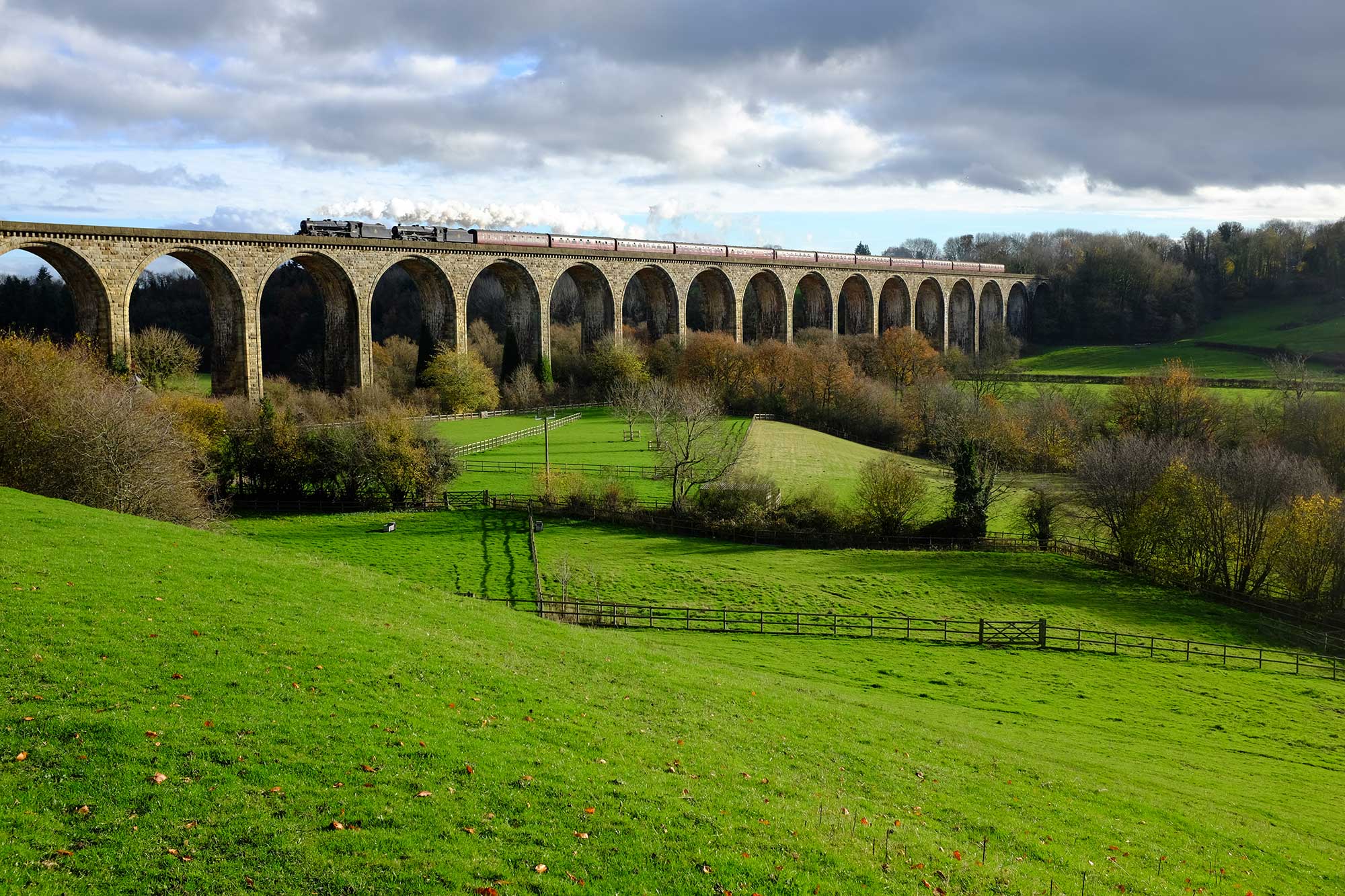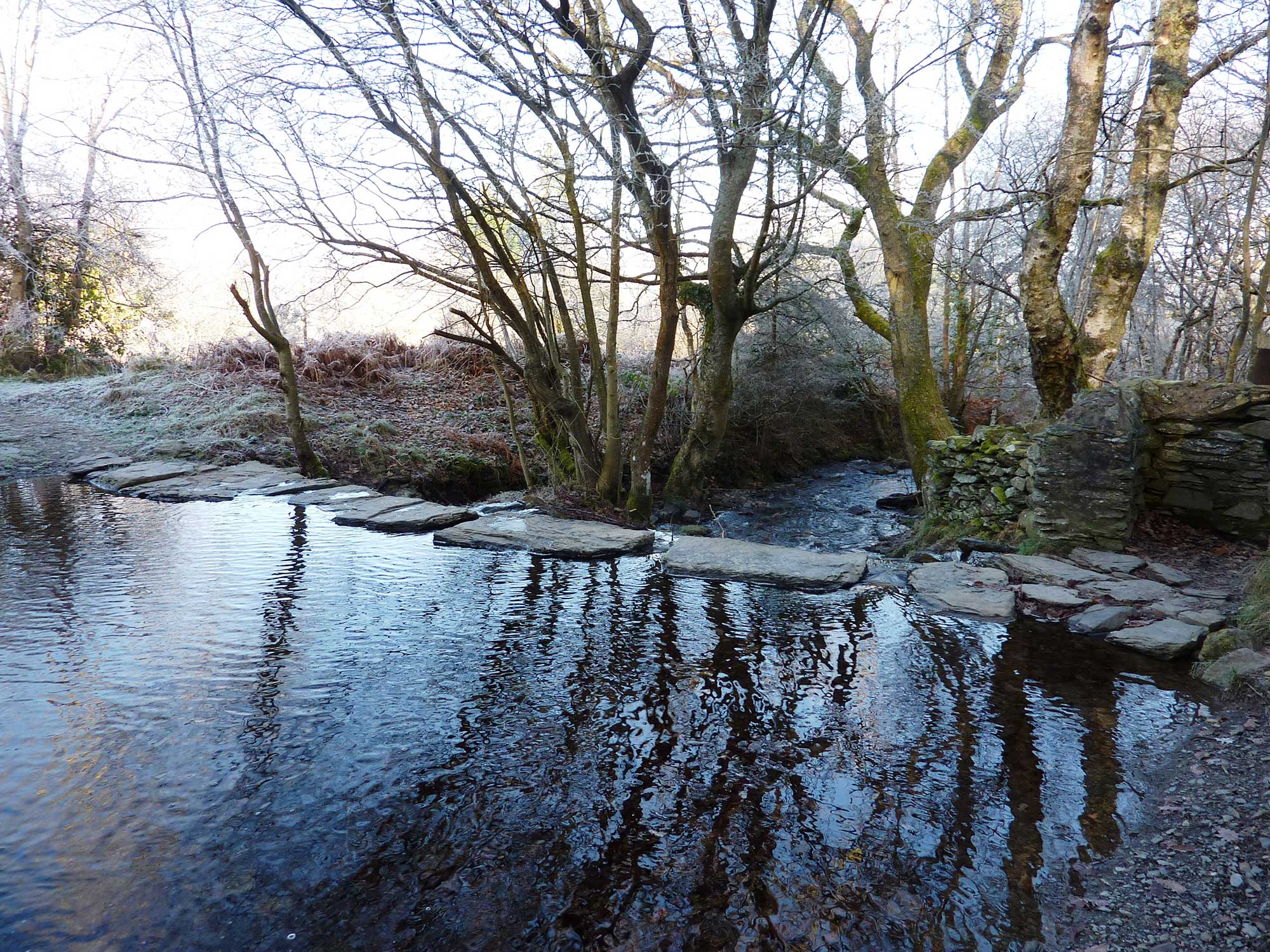The Jubilee Tower
-
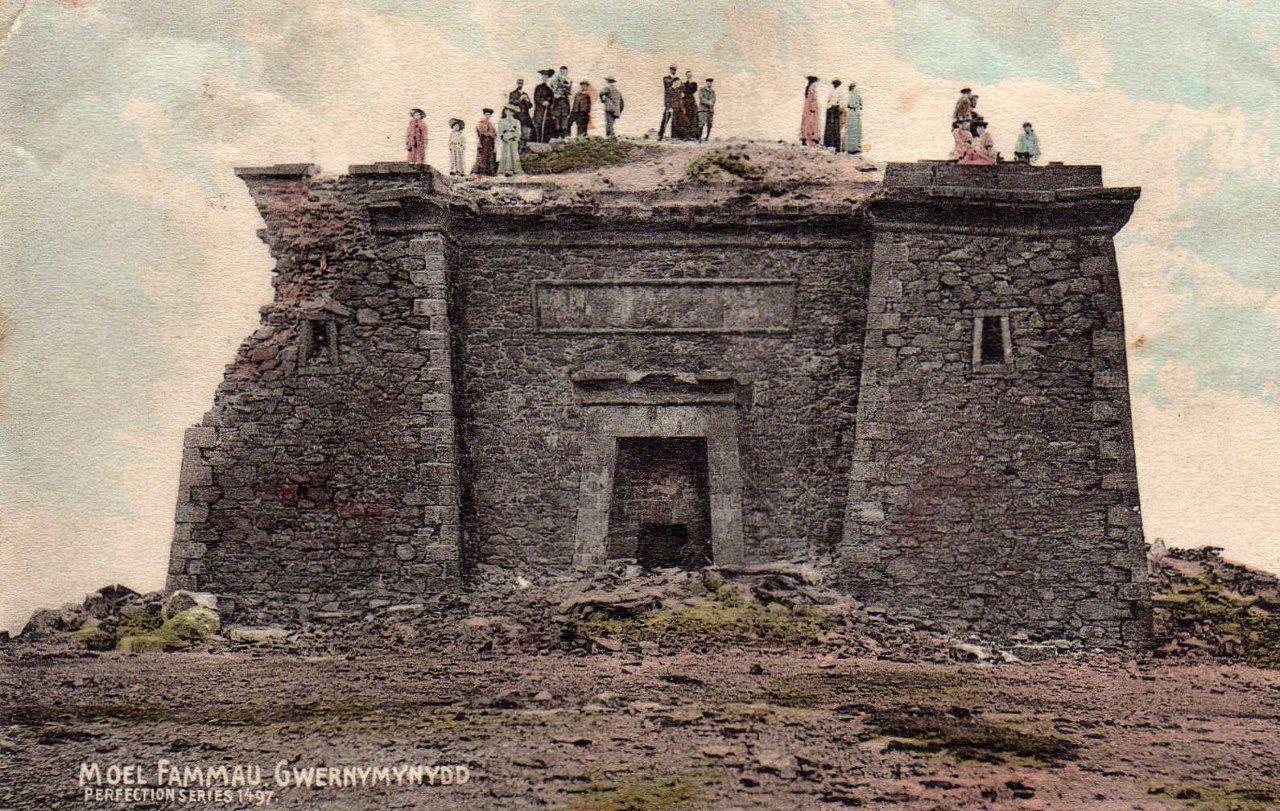 The Jubilee Tower in Edwardian Times
The Jubilee Tower in Edwardian Times -
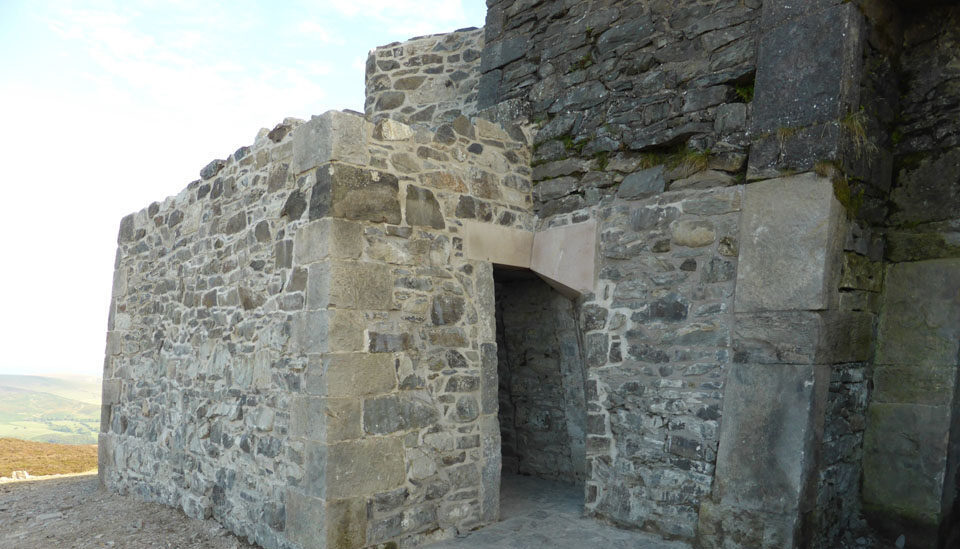 Restored entrance to Jubilee Tower, Moel Famau
Restored entrance to Jubilee Tower, Moel Famau -
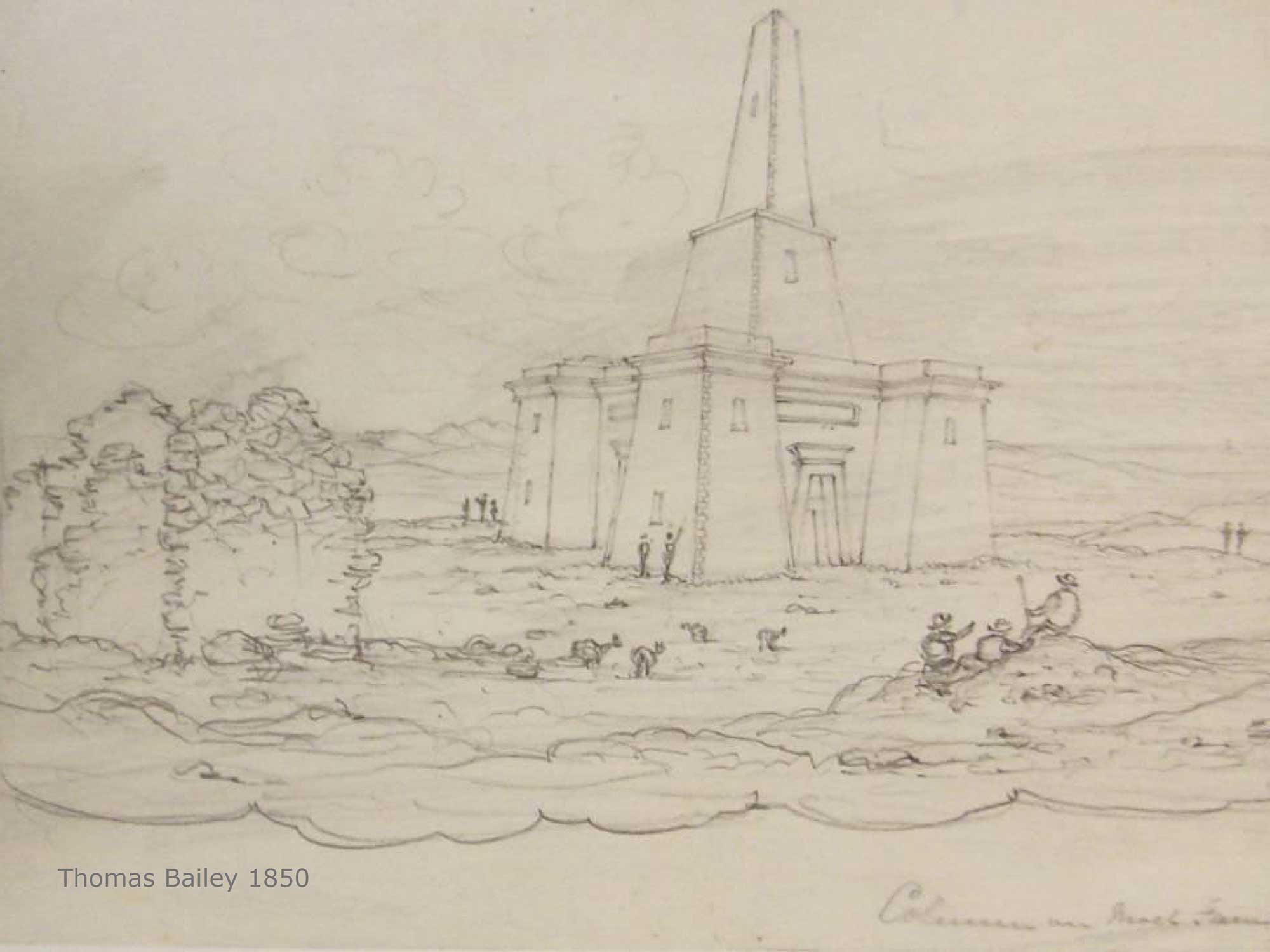
-
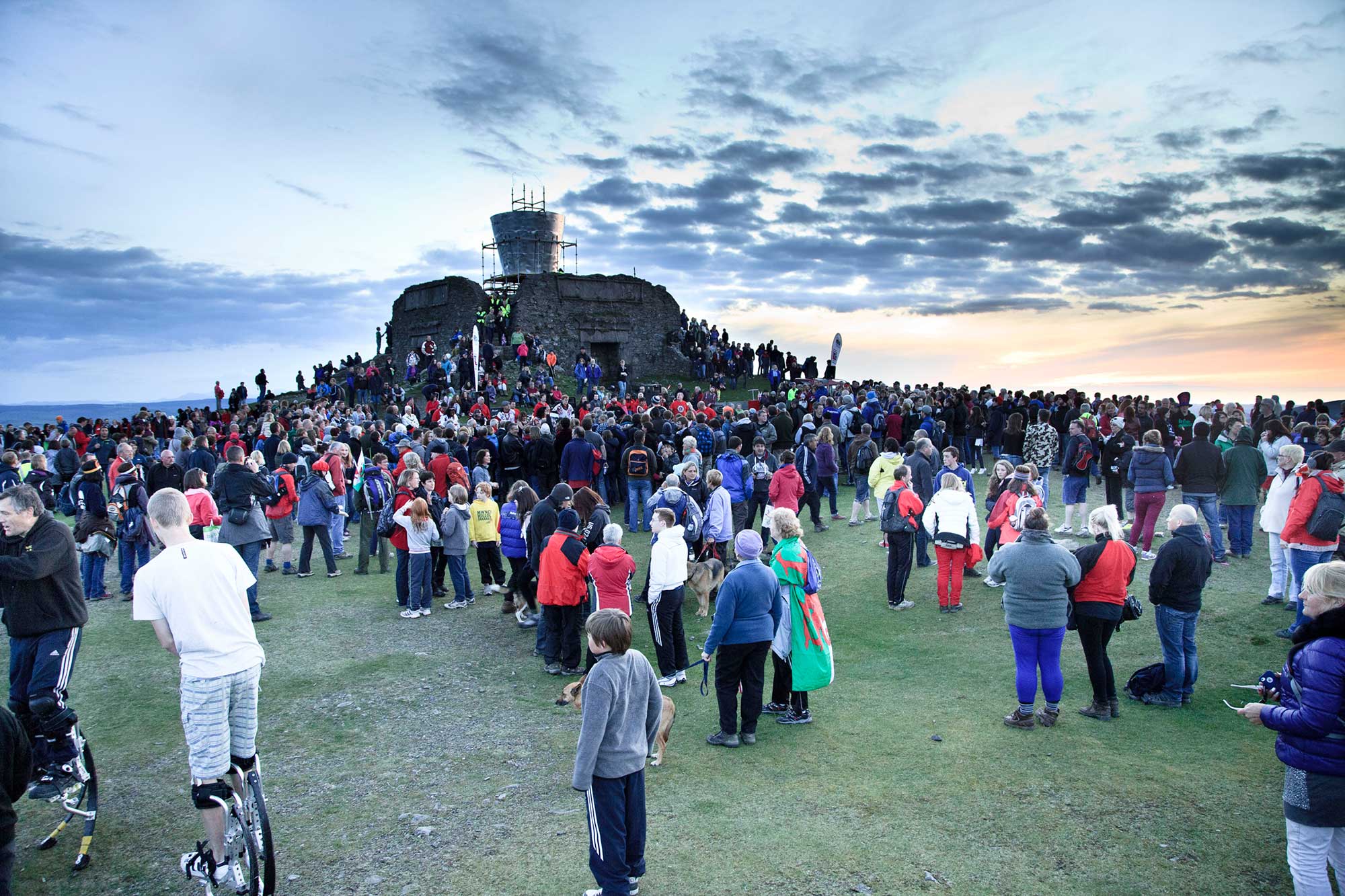 Celebrating the restoration of Jubilee Tower
Celebrating the restoration of Jubilee Tower
Built for the golden jubilee of “mad” King George III over 200 years ago, the Jubilee Tower changed the profile of Moel Famau. The foundation stone was laid with great fanfare on Thursday, 25th October 1810, however at that point, no design had been agreed.
The final design by architect Thomas Harrison was elaborate and impressive, in the soon-to-be-fashionable Egyptian style – a rectangular base with four bastions and sloping doorways, which can still be seen today, topped by an obelisk.
Squabbles over lack of money and poor workmanship ensued and the building was only finished, to a less grandiose plan, in 1817. By 1846 one corner had collapsed and the pointing had deteriorated. Money was raised for repairs but further damage was apparent by 1856.
Deterioration was rapid and in 1862 the obelisk collapsed dramatically with a tremendous crash during the calm following a fierce gale that had lasted for two days. It could be heard as far away as Denbigh Castle green.
Over succeeding decades various rebuilding schemes failed for lack of money and support.
Nothing was done until 1969 when the Denbigh and Flint branch of the Country Landowners’ Association decided that their contribution to European Conservation Year 1970 would be to tidy up the ruins and secure them from further deterioration.
In 1974 Clwyd County Council made Moel Famau a Country Park and in 1985 the Clwydian Range was designated an Area of Outstanding Natural Beauty. In 1995 Cadw listed the Jubilee Tower to give it legal protection because of its architectural and cultural significance.
Today, Moel Famau and the ruined Jubilee Tower provide a dramatic backdrop to the daily lives of the communities of both Flintshire and Denbighshire. They give the area a strong sense of place and act as a beacon to visitors from Cheshire, Merseyside and further afield.
The summit of Moel Famau is a place to return to over and over again. The ascent to it over rolling moorland with wide, open views leaves a lasting impression. And the Jubilee Tower, so prominent in the landscape, reminds us of days out, picnics and great expeditions.
Recent survey work commissioned by Denbighshire and Flintshire has managed to establish the extent and condition of the remaining original sections of the tower – and identified areas in need of further consolidation.
The tradition of holding great cultural celebrations at the top of Moel Famau has continued with crowds gathering for Royal weddings and jubilees. In 2007 the tower was a focal point for celebrations linked to the National Eisteddfod in Mold.
The following year the strong links between this area and Liverpool were marked when a “Moelfamaulambanana” decorated by local school children was unveiled to celebrate the city’s stint as European Capital of Culture.
In 2010 thousands of people made the ascent to mark the bicentenary of the Jubilee Tower with an unforgettable evening of fireworks, lasers and music.
In 2013, work to expose one of the original bastions and to improve access to the top of the Tower was carried out. The bastion chosen was the one most likely to still be intact underneath the rubble and earth. It was indeed intact and a cylindrical stairway was uncovered, which is now open for access for the first time since 1815. The stonework now visible is the original and was repointed with lime mortar as part of this work.
In 2014 the AONB team were asked to be part of a national project to light beacons at iconic locations across the UK to celebrate the Queen’s Diamond Jubilee. The project was coordinated by the Queen’s Pageant Master General and Jubilee Tower, along with the summit of Snowdon was selected as an anchor beacon location in North Wales, meaning it was one of the first to be lit. A huge cylindrical beacon, lit by gas burners was built on the top of the tower and a celebration with music and dancing, food and drink took place at the summit of Moel Famau on a clear summer evening.

